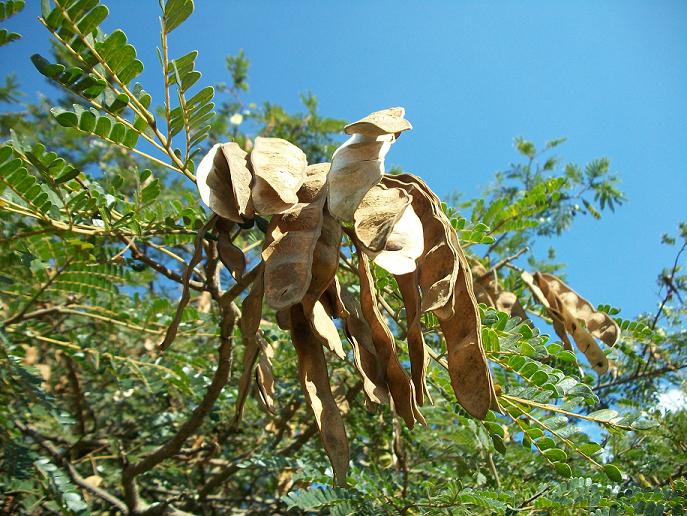Albizia adianthifolia

|
|
Albizia adianthifolia Common Names: Flat-crown Albizia, Rough-bark
Flat-crown Albizia, West African Albizia, Large-leaved False-thorn, Schlechters
Albizia Scientific
Classification Kingdom: Plantae Phylum: Tracheophyta Class: Magnoliopsida Order: Fabales Family: Fabaceae Subfamily: Caesalpinioideae Genus: Albizia Species: A. adianthifolia Synonyms: Albizia chirindensis (Swynn. ex Baker f.) Swynn. ex
Steedman, Albizia ealaensis De Wild., Albizia fastigiata (E. Mey.) Oliv., Albizia gummifera auct. non (J.F. Gmel.) C.A. Sm., Albizia intermedia De Wild. & T. Durand, Inga fastigiata (E. Mey.) Oliv., Mimosa adianthifolia Schumach., Zygia fastigiata E. Mey. Morphological Description Albizia adianthifolia, commonly known as Flat-crown Albizia, is a deciduous tree
growing 10–35 m tall, with a distinctive flat-topped or umbrella-shaped canopy.
Its key features include: · Bark: Smooth, light grey to yellowish-brown, sometimes reddish,
with granular, creamy inner bark exuding clear gum · Leaves: Bipinnate, feathery, 10–30 cm long, with 4–12 pairs of
pinnae, each bearing 10–30 pairs of leaflets, 5–12 mm long, resembling
maidenhair fern · Flowers: Fluffy, white to pinkish, 1–2 cm long, with long stamens, in
spherical heads, blooming seasonally · Fruit: Flat, brown pod, 9–19 cm long, 2–3 cm wide, containing 6–12
flat seeds, 7–9 mm long, 6–8 mm wide Distribution and Habitat Albizia adianthifolia is native to tropical and southern Africa, from Senegal and
Ethiopia south to South Africa (KwaZulu-Natal) and Madagascar. It thrives in: · Ecosystems: Rainforests, riverine forests, woodlands, savannas, and
forest margins · Climate: Tropical to subtropical, with rainfall of 600–2,000 mm
annually and temperatures of 20–35°C · Soils: Well-drained, sandy to loamy, often in nutrient-rich
alluvial zones · Altitude: Sea level to 2,000 m Ethnopharmacology Albizia adianthifolia, commonly known as flat-crown or false thorn tree, is a medicinal
plant traditionally used across Africa for its wide range of therapeutic
benefits. Various parts of the plant, including the bark, leaves, and roots,
are employed for their anti-inflammatory, analgesic, antimicrobial,
antioxidant, and wound-healing properties. It is traditionally used to treat
skin diseases, wounds, toothaches, respiratory infections, fevers,
gastrointestinal problems, and pain-related conditions such as arthritis and
muscle aches. Decoctions of the bark or leaves are also sometimes used to
manage eye infections and venereal diseases. Phytochemical studies have
identified bioactive compounds such as flavonoids, alkaloids, tannins, and
saponins, which contribute to its pharmacological activities. Although widely
used in ethnomedicine, more scientific and clinical studies are needed to
confirm its efficacy, establish safe dosage ranges, and explore its potential
for modern therapeutic applications. · Antimicrobial Activity: Methanol
bark extracts inhibited Staphylococcus aureus (MIC
0.05 mg/mL) and Escherichia
coli (MIC 0.1 mg/mL), attributed to
flavonoids and triterpenoids, supporting its use for skin infections, sores,
and sexually transmitted infections in South Africa and Cameroon (Tchinda et
al., 2017; Maroyi, 2018). · Anti-inflammatory and Analgesic Effects: Ethanol bark extracts inhibited cyclooxygenase-1
(COX-1) by 69% in vitro, surpassing indomethacin (66.5%), validating its use
for headaches, rheumatic pain, and fever in Zimbabwe (Jäger et al., 1996). · Antimalarial Activity: Stem
bark extracts showed antiplasmodial efficacy against Plasmodium falciparum in vitro (IC₅₀ 10–50 µg/mL), supporting its use for
malaria in Nigeria (Maroyi, 2018). · Neuroprotective Effects: Aqueous
leaf extracts attenuated 6-hydroxydopamine-induced anxiety and depression in
rats, increasing swimming time by 50% in forced swimming tests, supporting its
use for memory enhancement and neurodegenerative disorders like Alzheimer’s in
South Africa (Beppe et al., 2015). · Reproductive Health: Root
infusions increased uterine contractions in vitro, supporting its use for
irregular menstruation and labor facilitation in women in Ghana (Maroyi, 2018). · Anticancer Potential: Leaf
extracts containing triterpenoid saponins (e.g., adianthifolioside A) showed
cytotoxicity against cervical cancer ,has potential chemotherapeutic
applications ⚠ Toxicity Profile: Albizia adianthifolia contains alkaloids and saponins, which may
cause gastrointestinal irritation or hemolysis at high doses. Additional Uses · Timber: The pale brown to golden brown wood, with distinct sapwood,
is durable, termite-resistant, and used for light construction, furniture,
flooring, carving, and boat building · Fuel: The wood is valued as firewood and for charcoal production
in rural Nigeria · Cosmetics: Insoluble gum from the bark is used in local cosmetics and
as an adhesive in South Africa. · Cultural: Bark infusions are used in Yoruba rituals for spiritual
cleansing and protection. · Ornamental: The tree’s flat crown and feathery foliage make it a popular
ornamental in parks and gardens in South Africa References
External Links More Pictures |
|
| Compounds of Albizia adianthifolia | |
| References |